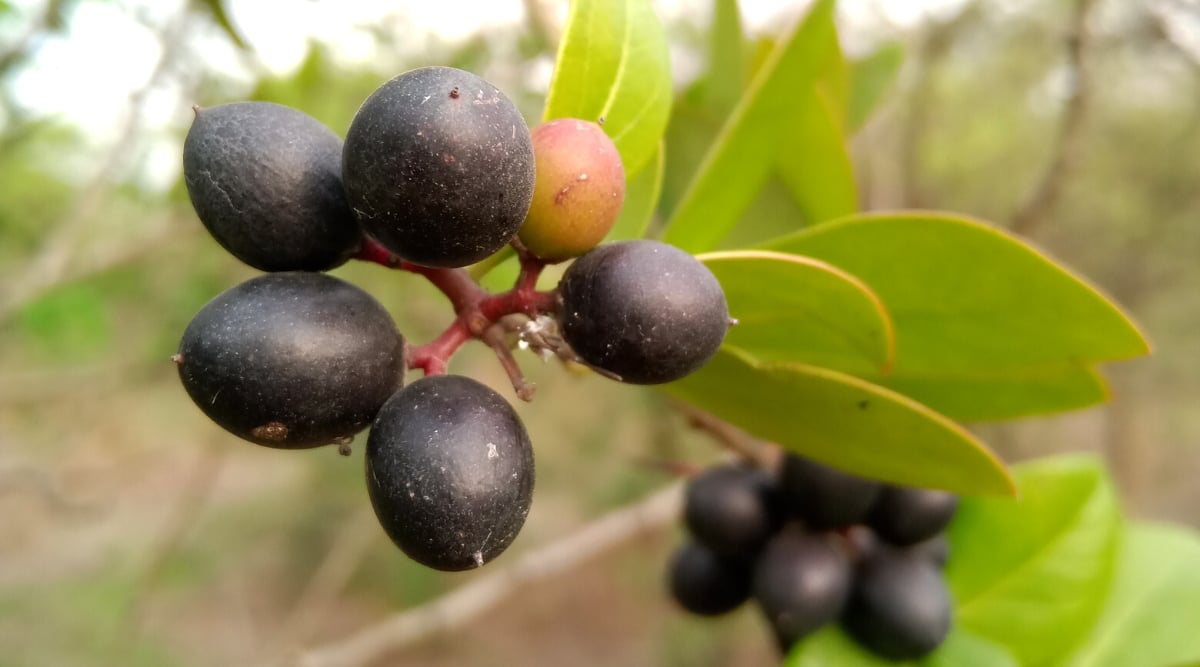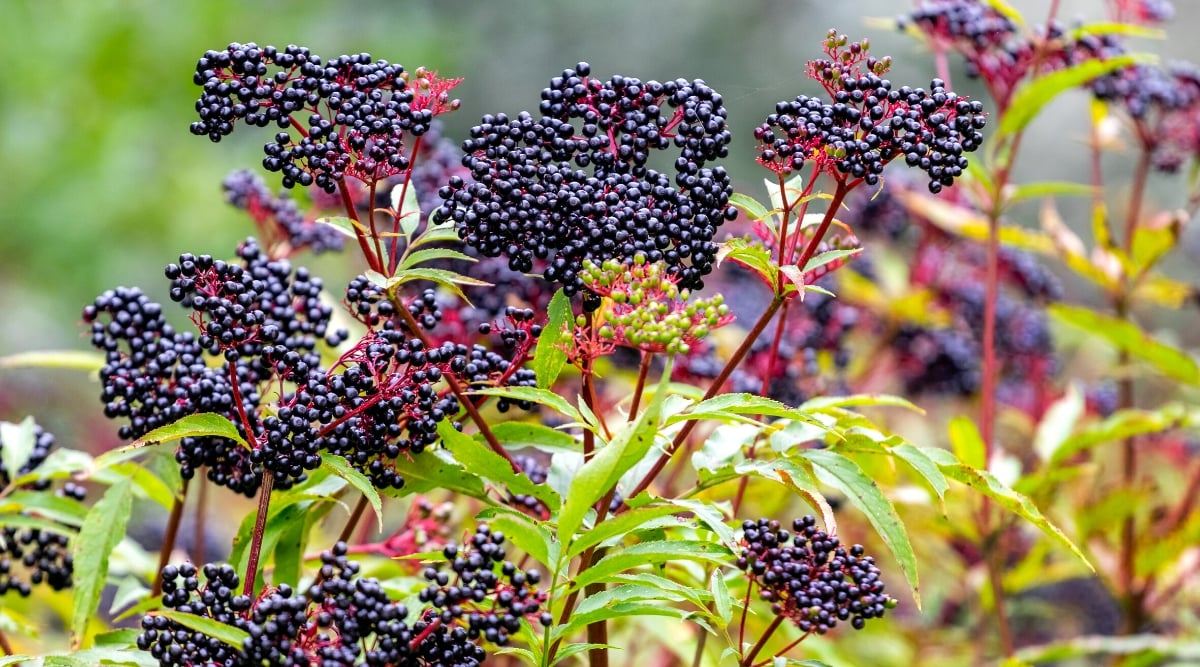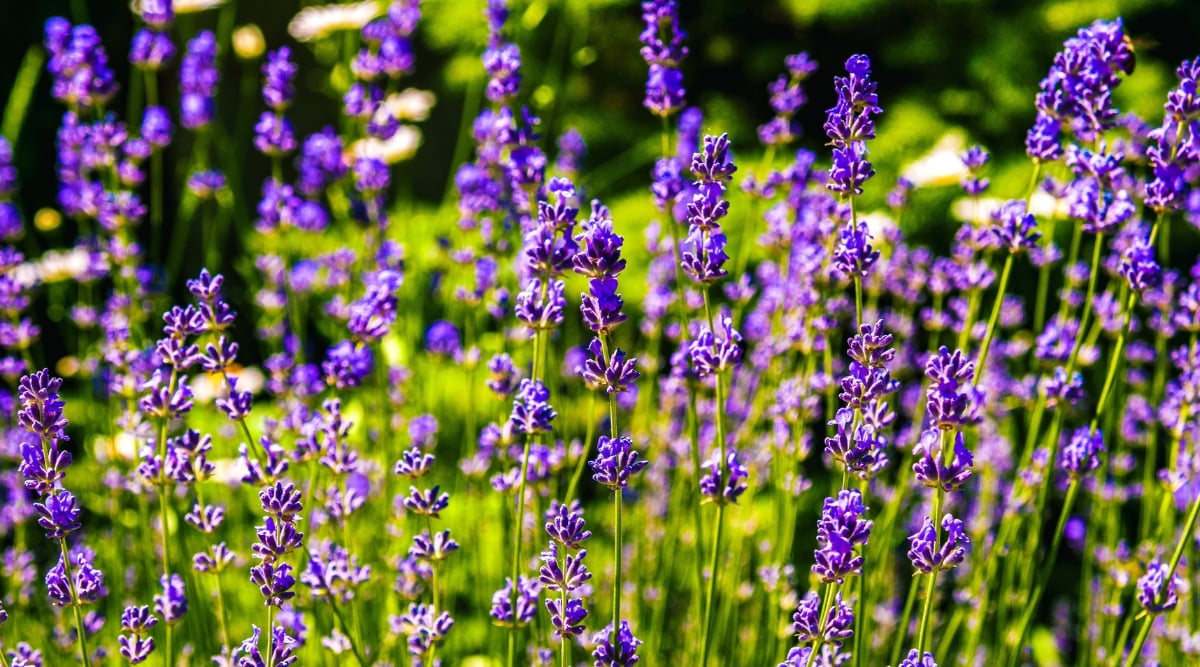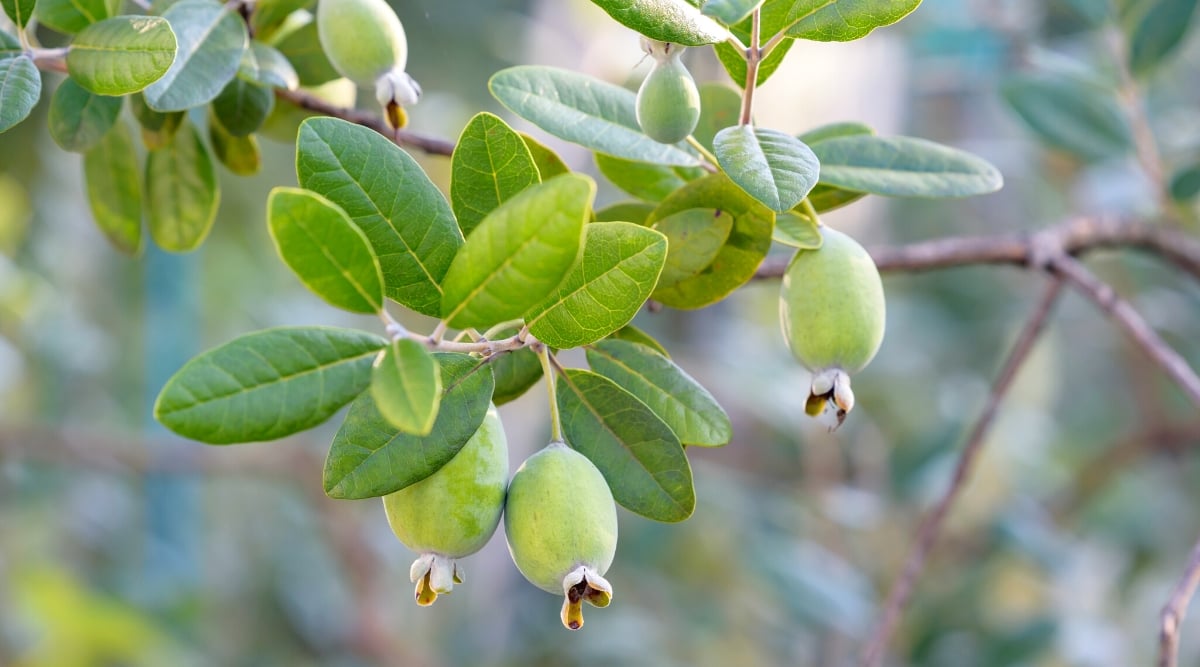Foodscaping is becoming increasingly popular in the gardening world. It involves the practice of mingling edible plants together with your ornamentals to not only create a beautiful landscape, but to grow food in a way that is both effective and aesthetically pleasing. Edible shrubs are an easy and beautiful way to begin foodscaping your garden.
While this concept may be making its rounds in popular gardening culture, it’s not new. Instead, it is a resurrection of a practice cultivated for centuries. The idea of mingling ornamentals with edible plants is a foundational concept in traditional English cottage gardening and has been practiced for many years in many different cultures.
If you are planning a foodscaping adventure, start with shrubs as the foundation for your edible garden. These larger, long-living plants create a wonderful backdrop for the herbaceous plants and seasonal vegetables that create the details. Here are 13 edible shrubs to build a stunning foundation for your edible garden.
Blackberry
Blackberries are nutrient-rich with high fiber, vitamins C and K, manganese, and antioxidants.
Blackberries are incredibly nutrient-dense and contain tons of healthy fiber. These sweet berries are loaded with vitamins C and K, a healthy dose of manganese, and plenty of heart-healthy antioxidants. Blackberry bushes can be upright or sprawling, so choose an upright variety of blackberry shrubs for our ornamental purpose.
The ‘Ouachita’ variety of blackberry bushes is a beautiful upright variety. If kept to a manicured 4’ tall, these bushes need little to no additional support. As a bonus, this variety is thornless.
Plant blackberries in your garden for delicious summer berries. Most varieties bear fruit in their second year, so you need patience to reap the benefits of this shrub!
Blueberry
 Blueberries offer a taste of summer and garden beauty year-round.
Blueberries offer a taste of summer and garden beauty year-round.
Juicy blueberries taste like a handful of summer and are even sweeter when sun-warm and right off the bush. With their low-calorie and high-nutrient ratio, these little fruits make a wonderful snack and taste pretty good baked into a cobbler or pie. One cup of berries contains 14% of your daily fiber content!
Different blueberry varieties grow in varied climates from Zone 3 south to Zone 10. In addition to their varied cold hardiness, they come in many sizes, from the large highbush all the way down to sprawling rabbit-eye varieties. So, whether you want to build a low ornamental hedge of blueberry shrubs or a high one, there is a variety just right for it.
Bush Plum
 The bush plum is valuable in edible gardens, producing nutritious edible and dried fruits.
The bush plum is valuable in edible gardens, producing nutritious edible and dried fruits.
You may not have heard of this plant before, but it makes an excellent addition to an edible garden. The bush plum shrub produces edible fruit commonly eaten and dried. They pack a real nutritional punch! It is native to Australia, where the Aboriginal people have used it for centuries as a good traveling food source, as well as using its bark medicinally.
Not only are the fruits of the bush plum good for eating, but they also make a beautiful dye for cloth. Some use the kernels to create a medical ointment. It is not a true plum but a relative of sandalwood. It is very drought-tolerant and has aromatic bark and foliage.
Elderberry
 Native to the US, elderberry bushes bear vibrant purple berries used to make lovely syrups.
Native to the US, elderberry bushes bear vibrant purple berries used to make lovely syrups.
Elderberry bushes are lovely shrubs native to most of the United States. Use the richly pigmented berries to make a delicious syrup that is not only lovely to eat but is rumored to have health benefits. It has lovely flower clusters in spring and summer that resemble Queen Anne’s Lace.
The delicate foliage of the elderberry bush brings an attractive textural element to the edible garden, and its fruit is sweet, juicy, and packed with vitamins and antioxidants. A word of caution: all parts of this plant, aside from its RIPE berries, are toxic and not for consumption.
Water elderberry bushes regularly. A layer of mulch or straw will help to regulate the soil temperature and help the soil retain moisture.
Fig
 Fig plants can vary in size and have attractive foliage and ripe, blushing fruits.
Fig plants can vary in size and have attractive foliage and ripe, blushing fruits.
Figs are delicious, sweet fruits that ripen in the summertime. Prepare them in many ways, like delicious jams and baked goods, or eat them fresh or dried. Figs are exceptionally nutrient-rich, full of potassium and antioxidants, and contain lots of fiber to promote gut and immune health.
Fig plants grow large, but you can prune them to a more manageable size. Whether you prefer a large shrub or a small tree, a fig has interesting foliage consisting of deep green leaves with three to five lobes and smooth white bark. The fruits are pretty, taking on a blush when they ripen.
Flowering Quince
 This shrub brings vibrant spring colors to the garden with its stunning flowers.
This shrub brings vibrant spring colors to the garden with its stunning flowers.
Flowering quince is a winner for beautiful springtime color in the edible garden. This relative of the rose family has an irregular growth habit and thorny branches, which doesn’t sound entirely appealing.
However, its flowers are stunning and feature shades of pink, red, orange, or white. Against the glossy green foliage, these lovely flowers give the garden a huge pop of color and bring plenty of pollinators to the yard.
Fruit follows flowers, ripening in the summer. The fruits make delicious jams and preserves. If left on the bush, they provide a food source for birds. Flowering quince is a low-maintenance shrub once established, but it’s essential to water regularly in its first year.
Goji Berry Bush
 Goji berries have some drought tolerance, and prolific fruiting starts in their second year.
Goji berries have some drought tolerance, and prolific fruiting starts in their second year.
A few years back, Goji berries were all the rage in the health food sphere. Small, red Goji berries are packed with nutrients, including protein, vitamins A & C, magnesium, iron, riboflavin, zinc, copper, magnesium, and beta-carotene. In short, they are a powerhouse and an excellent addition to any edible garden.
Goji berry bushes are drought tolerant and have excellent heat and cold tolerance. They don’t bear much fruit in their first year, but by the second year, they will produce more than you could need, from summer until the first frost. Add these berries to a smoothie for an extra nutritious snack!
Gooseberry
 Gooseberries in both US and UK gardens offer sweet-tart fruit for preserves and desserts.
Gooseberries in both US and UK gardens offer sweet-tart fruit for preserves and desserts.
This delicious member of the currant family is popular in the US and commonly found in gardens in the UK. The fruit produced by the medium-sized shrub is sweet and tart. It can make preserves, desserts, wine, or jellies. The fruit is typically white, green, yellow, or red.
Gooseberry bushes flower in the spring, although the flowers are small and green or white. They are attractive to pollinators, so the bushes produce a fair amount of fruit. These shrubs are very hardy and tolerant of different climates and soil types. You can hard prune and easily propagate them via stem cuttings.
Lavender
 Lavender’s famous scent finds use in cosmetics and baking.
Lavender’s famous scent finds use in cosmetics and baking.
It is easy to sing the praises of the lavender plant. Lavender has the most distinctive and well-known scent of any flower and gets its fair share of use in the cosmetic and wellness industries.
But did you know that lavender is wonderful for baking? All parts of the plant are edible, and the herbaceous flavor pairs perfectly with citrus flavors in baked goods.
Lavender is low maintenance. It’s easier to kill it with kindness than anything else. Poor soil, no fertilizer, and infrequent watering will keep your lavender plants happiest.
A row of lavender shrubs makes an incredible edging plant for garden paths. Growing lavender in a raised bed is a great way to ensure that it doesn’t receive too much of the fertilizer that you apply to other plants in the garden.
Oregon Grape
 Oregon grape is an evergreen with glossy leaves, great for hedges, and produces tart fruit.
Oregon grape is an evergreen with glossy leaves, great for hedges, and produces tart fruit.
Native to the Pacific Northwest, the Oregon grape shrub is an evergreen with dense, glossy foliage. It makes an excellent privacy hedge and produces delicious berries! That is if you add plenty of sugar.
The fruit of the Oregon grape shrub is very tart on its own. They are quite sour when raw but make a very tasty preserve.
Oregon grape produces flowers before producing its tart fruit, making it a pretty addition to the ornamental edible garden. The flowers bloom in large clusters of vibrant yellow blossoms. These beautiful and fragrant flowers attract pollinators from far and wide to visit your fruit and vegetable plants.
Pineapple Guava
 This tree has sweet fruit and attractive foliage.
This tree has sweet fruit and attractive foliage.
Pineapple guava, sometimes called feijoa, is an excellent addition to the edible garden if you are in a warm climate. Despite its name, pineapple guava is neither a guava nor a pineapple but produces sweet, tangy, and delicious fruit.
As it produces sucker shoots low on the plant, you can grow it as a large shrub or trim off the suckers and train it to a small tree. It has foliage similar to a gardenia, deep green with smooth edges, and a glossy finish.
You can grow pineapple guava as a hedging plant, adding beauty and functionality to the edible garden. The flowers are showy, with white petals and bright red stamen clusters tipped with golden pollen. It is a tropical evergreen and retains its attractive foliage year-round.
Pineapple Sage
 This fast-growing Salvia variety attracts hummingbirds with its pineapple-scented leaves.
This fast-growing Salvia variety attracts hummingbirds with its pineapple-scented leaves.
Pineapple sage is a variety of salvia that grows as a perennial in zones 8-11 and as an annual elsewhere. It grows so quickly, even as an annual, that it makes a lovely small shrub that hummingbirds are fond of.
It’s named for the leaves, which smell like pineapple when crushed. Delicious! While it is typically grown as an ornamental, and rightfully so, all parts of the plant are edible.
The leaves and flowers can be used as a garnish or to make tea. The foliage is dense, and the brilliant red flowers are plentiful in early to mid-summer.
Rosemary
 Rosemary is a versatile herb used in baking and cooking which tolerates a variety of conditions.
Rosemary is a versatile herb used in baking and cooking which tolerates a variety of conditions.
My favorite way to enjoy the culinary virtues of rosemary is baked into a loaf of fresh sourdough bread. But if you sprinkle it on roasted root vegetables, I won’t pass them up!
Rosemary is a beautiful and hardy plant that is shockingly drought tolerant when mature, and the evergreen varieties retain their aromatic foliage throughout the winter to be used liberally in holiday recipes.
Rosemary looks lovely in the garden. It is easily recognizable by sight and smell and produces pretty little flowers.
Bees appreciate it if you let the plant go to flower. However, allowing the flowers to remain may make your stems woody, making the foliage less appetizing. Like most herbs, the leaves are more flavorful when the plant doesn’t expend energy on flowers.
Rugosa Rose
 Beach rose produces beautiful, edible flowers for teas, preserves, and cookie toppings.
Beach rose produces beautiful, edible flowers for teas, preserves, and cookie toppings.
Also known as the beach rose, this gorgeous plant has flowers that are beautiful and edible. You can use its petals for making teas and preserves, but my favorite way to eat them is on top of a shortbread cookie.
Roses make unique decorations for baked goods with their delicate, colorful flowers. The most recognizable edible part of the rose is the hips. These small fruits have many reputed health benefits and appear in cosmetic products for their anti-aging properties. They are an excellent source of vitamin C.
Rose bushes make great additions to any garden. The beauty of their lovely blossoms can attract pollinators and dress up your landscape.
Yucca
 Surprisingly cold-tolerant in Zone 5 and beyond, yucca boasts spiky desert-like aesthetics.
Surprisingly cold-tolerant in Zone 5 and beyond, yucca boasts spiky desert-like aesthetics.
Surprisingly, this succulent plant grows as far north as Zone 5! Yucca is typically considered a tropical plant but has excellent cold tolerance.
Above the ground, yucca has a delightfully spiky texture and aesthetic. It looks like a true desert resident but is very adaptable.
The best thing about yucca is the root and the yummy ways to prepare it. Bake yucca root can be baked into bread, or fry it like big, chunky french fries. It can be boiled and makes wonderfully crunchy chips, perfect as a vehicle for your favorite dip.
This textural element brings so much fun to your edible garden.
Final Thoughts
An edible or foodscaped garden serves many purposes, both practical and ornamental. Incorporating attractive edible plants in the landscape creates an interesting, useful, and beautiful space. These shrubs all make wonderful foundational plants for your edible garden.




